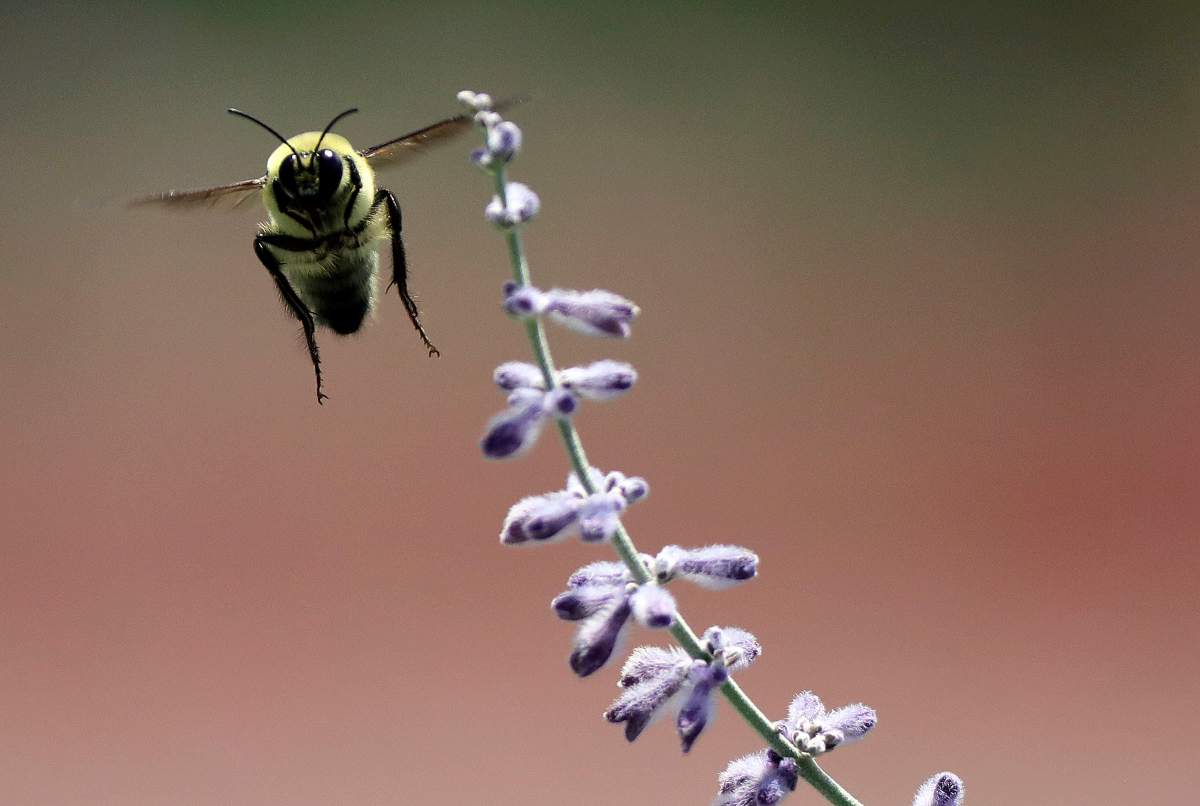Monarch butterflies, known for their distinct orange and black wing markings, have been added to the endangered list, under Canada’s Species at Risk Act (SARA).

This is an up-listing from their previous status of special concern.
“It underscores the pressures that we’re seeing here in Canada in terms of habitat loss, climate change, lack of milkweed that the monarchs are facing,” Nature Conservancy of Canada spokesperson Andrew Holland told Global News.
Milkweed is a pink wildflower essential for monarch butterflies, serving as a primary food source and place to lay their eggs.
These iconic butterflies were first listed as endangered in Canada by the Committee on the Status of Endangered Wildlife in Canada (COSEWIC) in 2016. The Environment Ministry takes COSEWIC designation into consideration when determining formal designation under SARA.
This designation under SARA gives endangered or threatened species additional protection on federal lands, making it an offence to kill, harm or damage a species residence.
The government is also mandated to establish recovery strategies and an action plan for these species by working with provinces, First Nations, municipalities and conservation groups.
However, Holland points out that the International Union of Nature Conservation recently improved its listing of monarch butterflies from endangered to vulnerable.
“It’s clear that here in Canada they’re having a tougher time and elsewhere around the world because if the International Union for the Conservation of Nature has decided to improve the status of the monarchs, but here in Canada we’re taking steps to sort of highlight its urgency,” Holland said.
Monarchs are a migratory species found all across North America. Pollinator Partnership Canada (P2C) director Vicki Wojcik says this makes them a strong indicator of broader ecological health.
“When we see a decline in Canada and a reason to elevate the listing of the monarch butterfly here, that’s not always done in isolation with what’s going on in Canada. We look at the population in Mexico and in the United States and that total landscape-level international connection,” Wojcik explained.

Holland is based in Fredericton, N.B., and says the NCC’s Atlantic conservation partners have been seeing far fewer populations of monarch butterflies than in previous years.

Get breaking National news
“Hopefully it just gets more people thinking about the status of this little orange and black butterfly that we would commonly see for many, many years in local parks and green space, as we’ve been accustomed to seeing this for years, and now it’s listed as endangered,” he said.
He adds that an easy way people can help sustain monarchs and other pollinators is by planting milkweed and other native wildflowers in your yard, flowerbed or even a pot on an apartment balcony.
Western bumblebees also face more risks
The monarch butterflies aren’t alone, either.
Two subspecies of western bumblebee are receiving new SARA designation. Occidentalis bees found in British Columbia, Alberta and Saskatchewan are now classified as threatened, while the mckayi subspecies found in B.C., Yukon and the Northwest Territories is under special concern.
Wojcik says this SARA listing is a mixed blessing because it means populations are declining, but it compels conservation efforts.
“There’s an obligation on behalf of the federal government and others that have the species occurring on their land to actively engage in conservation plans,” she said.
“It can mean very good things and species that do get listed or have their status elevated after some time often are delisted because of active conservation efforts. So, it’s again a mixed blessing, but hopefully the future will be better for bumblebees.”
For threats to bumblebees, Wojcik says there are a variety of factors such as habitat loss, invasive plant species, disease and climate change.
On the climate change front, she says bees time their maturation from the larva stage with the blooming of flowers they feed on. Normally, this would be linked to seasonal temperature increases and flowers blooming with the right amount of daylight.

However, climate change is throwing off this timing, with bees emerging a few days earlier than flowers are blooming.
“Their life span is two to four weeks. So, if you are a bee and you’re used to seeing a certain flower, you emerge from your pupa and you’re like, ‘Hey, I need food,’ and your flower is late in blooming by like three or four days, that’s actually a significant portion of your life in which you don’t have your food source around,” Wojcik explained.
“So, if we think of it that way, proportionally, that’s like getting up to toddler stage as a human and not having any food up until then.”
With this short lifespan, Wojcik says insect populations are resilient to seasonal changes. So, what often influences a population decline usually happened years prior.
“So, if you have a really, really bad, let’s say, drought here, and that’s what’s causing a lack of flowers in a landscape, you won’t notice until two or three years down the line that there’s been a change in population,” Wojcik explained.
“If the environment kind of fluctuates and we have a good year, a bad year, a good year, a bad year, the entire population is very well adapted to deal with that. But if we’re on a trajectory where we’re going in a direction where it’s going to get worse, so that association is getting more and more and more, then we’re absolutely going to see a decline.”







Comments